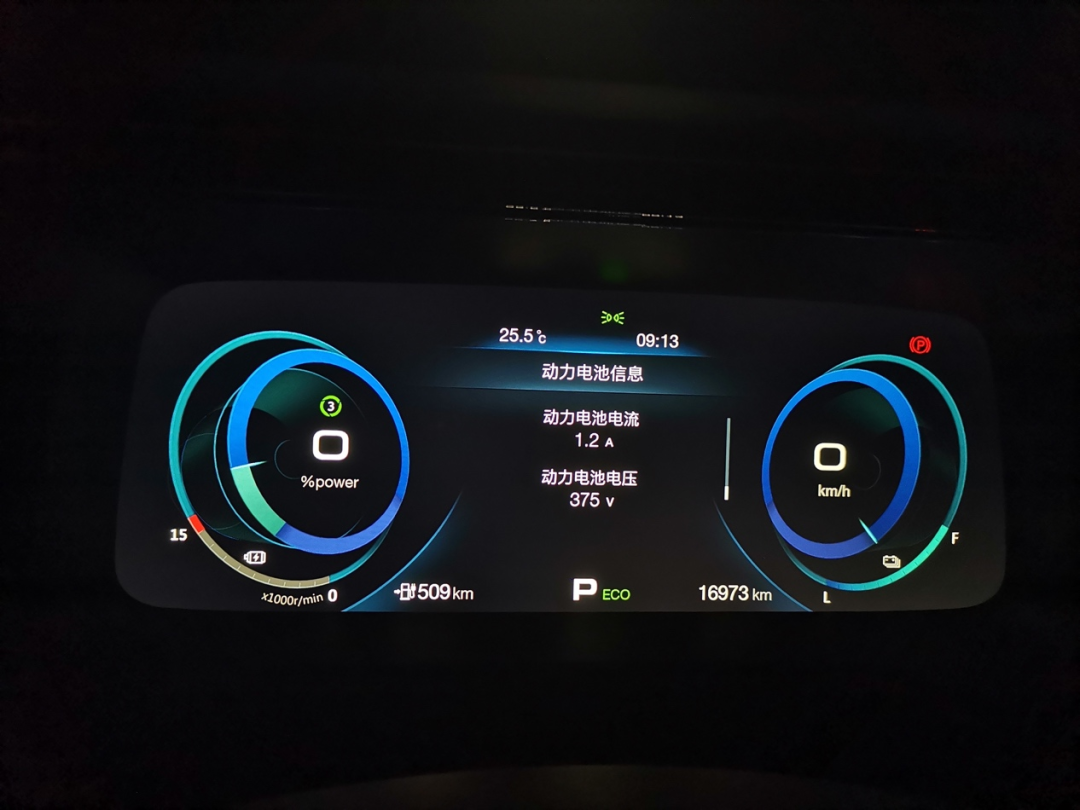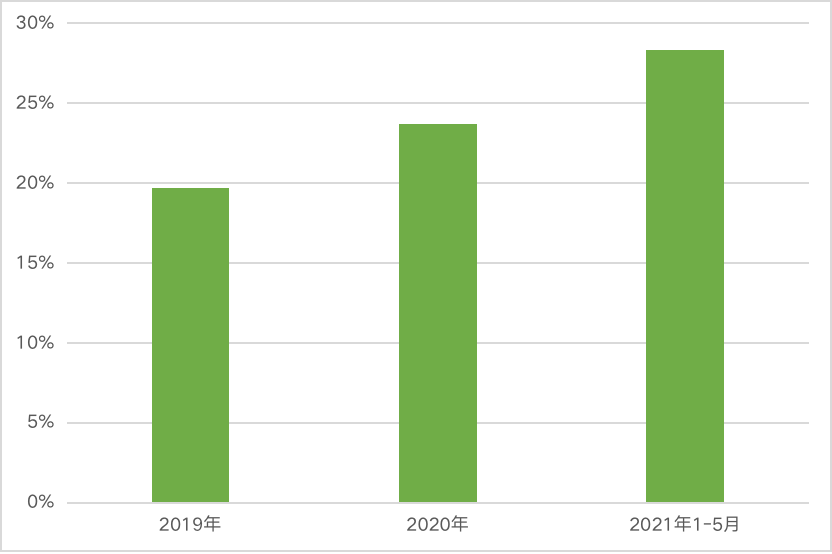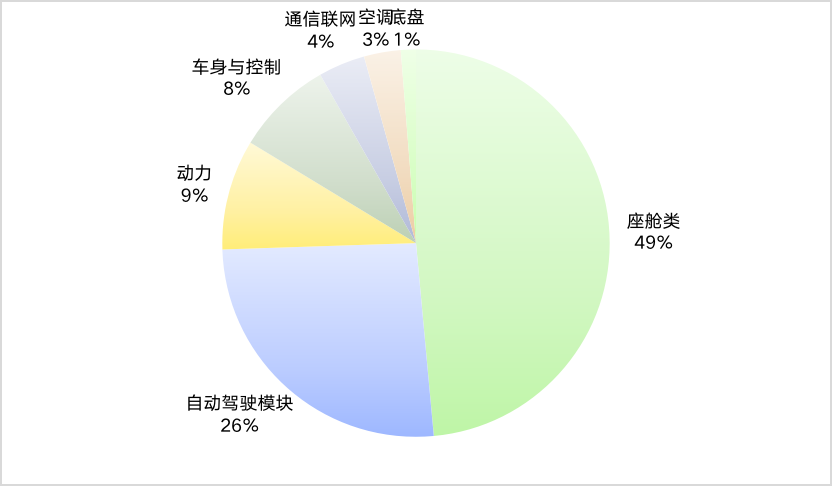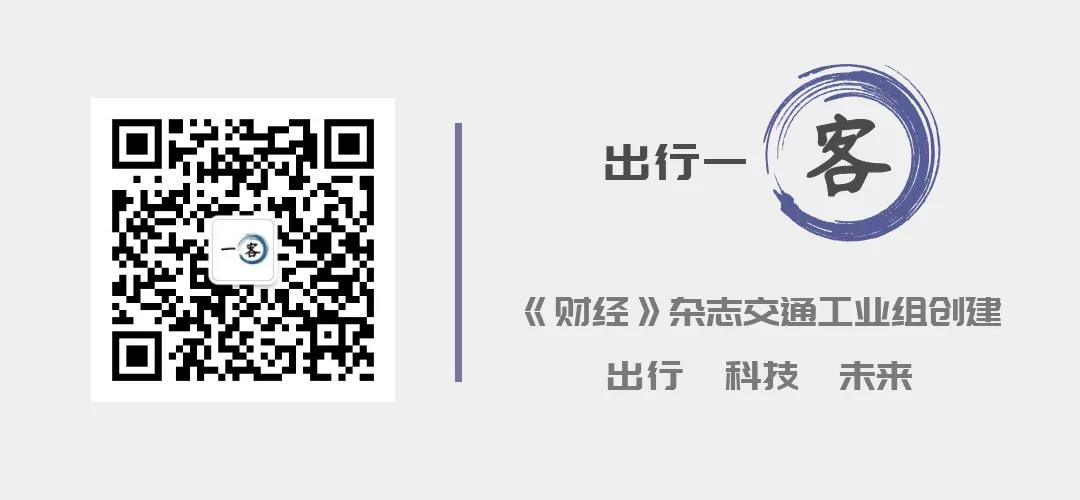The following is a professional translation of the Markdown Chinese text into English with HTML tags preserved. Only corrections and improvements have been made.
The article is authorized reprint from Traveling One Passenger (WeChat public account ID: carcaijing), created by the transportation industry group of the magazine “Finance,” by QI Zhan-Ning, Wang Jing-Yi, Zhao Cheng, and edited by Shi Zhi-Liang.
Is OTA already a standard feature of intelligent vehicles? What problems have been exposed while speeding up software iteration?
Has your car ever been secretly “upgraded” at night?
Rao Bin, the owner of a GAC Toyota iA5, told Traveling One Passenger (ID: carcaijing) that his car underwent an OTA (Over The Air, or over-the-air download) upgrade on the night of July 18th without his knowledge. The iA5 is a compact electric vehicle that was released in 2019 with a starting price of 169,800 yuan.
A few days later, Rao Bin noticed that the State of Energy (SoE), or the remaining battery energy, was only about 50 kWh when the vehicle was fully charged, which was nearly 15% less than the previous 58.8 kWh before the upgrade. This would lead to a decrease of more than 100 kilometers in the vehicle’s cruising range.
After three visits to the 4S store for testing, he confirmed that the above situation occurred because the battery was “locked.” GAC Toyota did not obtain his consent before the OTA upgrade. Some believe that this was done to compensate for the defects in the power battery and prevent spontaneous combustion caused by high temperature.
Upgrading without consent is just one of the issues caused by the popularization of OTA technology. According to data from the third-party automobile quality evaluation platform Chezhi, the number of complaints about “system upgrade issues” rose from 375 cases in 2019 to 1,254 cases in 2020, an increase of more than three times. In the first two months of 2021, 81 complaints were received, an increase of 7.1 times over the same period last year. OTA is currently one of the mainstream means of system upgrade.
To standardize OTA upgrades, since the end of 2020, regulatory agencies have successively issued three regulations related to OTA upgrades. The State Administration for Market Regulation requires automakers to file for an OTA recall system, while the Ministry of Industry and Information Technology requires automakers to inform users of upgrade content.
GAC Toyota’s move can be said to have hit the nail on the head. With the arrival of the era of automobile intelligence and networking, OTA has become not only a tool but also a system, and new business models and even ecosystems are brewing.
Technology is advancing by leaps and bounds, and regulations are following suit. The process of reconciliation between the two is inevitable. As OTA gradually enters the cage, new rules of the game are taking shape through exploration by car owners, companies, and regulatory authorities.Partner of Oliver Wyman, Zhang Junyi, told Carcaijing, “Changes in OTA policies are a good thing. Although they may cause slower iteration and increased administrative costs in the short term, at least OTA implementation and execution are now under government supervision and are being observed by third parties. This also serves as a warning to some companies that have grown too fast, and protects consumer interests and passenger safety in the process.”
Do You Consent?
Although the full-charge SoE is not what it used to be, the displayed range of Guangqi Toyota iA5 on its on-board system has not changed.
Therefore, at first, Rao Bin did not suspect that there was an issue with the vehicle’s battery, and attributed it to himself “pressing the gas pedal too hard” or frequently using the air conditioning. In theory, his car, which had only been driven for a year and traveled 16,000 kilometers, should not have experienced such a large loss of battery capacity. Generally speaking, the power battery of pure electric vehicles only deteriorates by 2.3% per year.

After joining several Guangqi Toyota iA5 owners’ rights protection groups, Rao Bin discovered that at least several hundred other owners had experienced the same situation as him. It wasn’t until after testing by a 4S dealership that he could confirm that it was a problem with the BMS (Battery Management System).
Not to mention agreeing to OTA upgrades for their cars, they only found out about the upgrade content through owners’ groups and media reports. Before it happened, Guangqi Toyota had not notified the owners at all.
Some car owners have exported the TBOX (Telematics BOX) logs of the Guangqi Toyota iA5 car system and found that the BMS ECU (Electronic Control Unit) of the vehicle was updated to version 2510015ARD0000S.9 on July 18th.
Under this version, the battery capacity in full charge status is only 51kWh, while the battery capacity of the Guangqi Toyota iA5 vehicle certificate should be 58kWh. In other words, the vehicle’s battery capacity has been “capped” by the BMS, locked to only 86% of the original capacity.
In addition to being “battery locked,” Beijing car owners have also discovered that the power output of these vehicles is reduced to 60% of the originally specified 135kW, and charging efficiency has also greatly decreased.
The car owners are perplexed, as OTA upgrades in the past have been used to improve vehicle performance, such as adding entertainment functions to the on-board system or upgrading the map software. Why did this time result in downgraded performance? What is even more unacceptable for car owners is that Guangqi Toyota did not seek their consent prior to the upgrade, nor did they disclose its specific content, leaving consumers with no choice.# OTA Upgrade is Not a Wild West
On August 12th, the Ministry of Industry and Information Technology of China released the “Opinions on Strengthening the Management of Smart Connected Vehicle Production Enterprises and Product Access” (hereinafter referred to as the “Access Opinions”), which requires companies to “ensure that the vehicle is in a safe state during online upgrading and inform the vehicle users of the purpose, content, required time, precautions, upgrading results and other information”.
According to feedback from several Guangzhou Toyota iA5 car owners, this OTA upgrade did not comply with the regulations of the Ministry of Industry and Information Technology. Although the new regulations were issued by the Ministry of Industry and Information Technology after the upgrade of Guangzhou Toyota iA5, the State Administration for Market Regulation had long ago clarified the rights of consumers.
In November 2020 and June 2021, the State Administration for Market Regulation successively released the “Notice on Further Strengthening the Supervision of Automotive Remote Upgrade (OTA) Technology Recall” (hereinafter referred to as the “Notice”) and “Supplementary Notice on the Record of Automotive Remote Upgrade (OTA) Technology Recall”.
The “Notice” pointed out that if consumers, parts manufacturers, software and system or data service providers, etc., find that producers are using OTA to conceal vehicle defects and avoid recall responsibility, they can directly report to the Quality Development Bureau of the State Administration for Market Regulation. This is also the basis for Guangzhou Toyota car owners’ collective rights protection.
Why did Guangzhou Toyota “lock the electricity”? Many car owners speculated that on July 15th, a Guangzhou Toyota iA5 caught fire while charging in Xiamen, which prompted Guangzhou Toyota to make the decision to “upgrade secretly”.
An industry insider who analyzed it for Carcaijing said that this OTA upgrade by Guangzhou Toyota may be to add an extra layer of insurance to the Ningde era NCM811 ternary lithium battery carried by iA5, reduce the actual capacity of the battery to prevent overcharging, reduce the output power to avoid high temperatures, and lower the charge-discharge efficiency to extend battery life.
“Locking the electricity” is not uncommon in pure electric vehicles, especially in July and August when the temperature is high. Tesla and WmAuto have also been complained about “locking electricity”, which also occurred in summer.
However, this is not a legitimate reason for Guangzhou Toyota to bypass car owners and perform upgrades late at night. “Until now, Guangzhou Toyota has not responded officially, and we hope Guangzhou Toyota can explain why it did this and whether it is compliant,” said Rao Bin.
As of the publication of this article, Guangzhou Toyota has not yet announced a solution. Carcaijing sent an interview outline to Guangzhou Toyota on August 25th, and the company said it could not respond temporarily. It is reported that the State Administration for Market Regulation is currently investigating this.
The Must-Have Path of “Software-Defined Car”
OTA technology has been quite mature in the application of computers and smartphones, and consumers are also accustomed to it. However, in 2012, Tesla first enabled the Model S to use OTA upgrades, which was quite revolutionary at the time.Vice Director Liang Weiqiang of the Intelligent Connected Technology R&D Center at GAC Research Institute told Carcaijing (ID: carcaijing) that as the underlying technology for automotive software updates, OTA technology empowers intelligent connected vehicles with continuous growth vitality. The frequency, number, and quality of OTA updates have become key means for intelligent connected vehicles to compete in technology capabilities, brand differentiation, and enhancing user stickiness.
Zhang Junyi believes that “all car companies, without exception, promote OTA functionality to consumers as one of their preferred selling points. The future direction of whole-vehicle OTA will be increasingly prevalent not only in luxury cars, but in ordinary car models as well, as the architecture of car models iterates.”
Earlier OTA for automotive products generally referred to SOTA (Software Over The Air), which can remotely upgrade various parts of the vehicle, such as entertainment systems, navigation, and intelligent cockpit software updates, similar to updating individual applications on a phone.
Tesla pioneered FOTA (Firmware Over The Air) for the entire vehicle system, which updates the complete firmware of the vehicle, similar to upgrading the firmware of a phone system, involving core framework components such as ECU (Electronic Control Unit) and suspension control unit.
The technical difficulty and hardware requirements for FOTA are significantly higher than SOTA, but of course, this also brings car owners a more comprehensive driving experience enhancement.
Usually, the purpose of OTA is to increase or improve vehicle performance or repair software defects. Tesla has launched OTA several times, shortening the 0-100 acceleration time for products such as the Model S and Model X.
For car owners, OTA upgrades are like changing saddles on a good horse, constantly improving driving experience and entertainment functions, bringing a fresh experience. For manufacturers, OTA provides an opportunity to “sew and mend” their products, and even in some cases avoid recalls.
Following Tesla, all new carmakers have included OTA functionality as standard for their products. In January 2019, NIO and XPeng Motors almost simultaneously launched their first OTA upgrades, with Ideal making its debut in early 2020.
As of June 2021, Tesla, XPeng Motors, NIO, Ideal, WM Motor, Leading Ideal, and NETA, seven new carmakers, have pushed out 125 OTA upgrades. Among them, FOTA in domains such as power systems, body systems, and advanced driver assistance systems account for the majority. Some car owners have expressed that every OTA update is a surprise, and that it’s very convenient to control OTA upgrades with their phones from home. Online communities also frequently express their expectations or feedback on OTA improvement.According to the data from 42HOW database, from January to May 2021, the front-loading OTA assembly rate of Chinese passenger cars reached 28.3%. Data released by the Gao Gong Intelligent Automobile Research Institute shows that the OTA installation rate of new domestic market vehicles reached 22.42% in 2020, and it is expected to increase to 35-40% in 2021.

Why has OTA function become a standard feature of intelligent connected vehicles? More appealing to automakers than saving upgrade costs is the prospect of a new business model formation, in which OTA technology is indispensable.
Liang Weiqiang says, “In the era of intelligent vehicles 3.0, cars are more of a hardware carrier. The functionalities that can be achieved depend on users, OEM manufacturers, and developers. With a development cycle of just two to three years, it is impossible to fully exploit all the potentials of a car. Therefore, new features need to be continuously developed after mass production.”
And these new functionalities need to be loaded onto the vehicle and iterated quickly. The traditional way of software updates is upgrading in-store, which is almost unimaginable in the era of intelligent connected vehicles. OTA technology bridges the last mile of “software-defined cars,” making it possible to build an ecosystem.
With OTA technology, Tesla has already tasted the sweetness of software subscription services. The pricing for Tesla’s FSD (Full Self-Driving) feature software package has reached $10,000, and the monthly subscription price has reached $199. According to the Tesla official website, upgrading the FSD suite can enable features such as summoning and automatic parking, and it will continuously introduce new functionalities.
According to the prediction of Orient Securities, Tesla’s FSD revenue in 2025 will reach $7 billion, accounting for nearly 9% of Tesla’s automotive revenue and contributing 25% of its automotive gross profit.
Naturally, the new domestic car-making forces are unwilling to lag behind. Companies like WM Motor, NIO, and XPeng have all launched software packages with different functionalities, charging from 300 yuan to 40,000 yuan.
Zhang Junyi told “Chuxing Yike” (ID: carcaijing), “Software upgrades give automakers the right to charge fees and may also be developed into an App Store model. This gives the entire vehicle factory a great imagination space and is also a reason why the valuations of intelligent electric vehicle companies are getting higher.”
Liang Weiqiang also believes that OTA will bring a new business model. “In the future, we will standardize and normalize vehicle capabilities to build a secure capability open platform to attract third-party companies to play freely on our capability open platform, thereby forming an application ecosystem and creating more long-tail value.”But it depends on having a large enough user base. “Whether or not the ecosystem can be built depends on whether there is a large enough user base. The user base needs to be large enough to attract third-party involvement, rather than being dominated by the automakers, for the ecosystem to be considered successfully constructed. This may require a user base of one million or more,” said Liang Weiqiang.

OTA or Recall?
Car owners generally welcome richer functionalities obtained through OTA upgrades for their products. The more controversial issue is whether carmakers should use OTA updates to correct product defects.
On June 26, 2021, Tesla announced a recall of 380,000 Model 3 and Model Y vehicles. However, this time it did not use the traditional recall pattern, but only updated the software via OTA for safety purposes.
On social media platforms, many users questioned, “Is this even considered a recall?”
Indeed, as the level of automotive intelligence increases, the boundary between OTA upgrades and recalls has gradually become blurred, and enterprises can even avoid recalls through OTA updates. Until November 2020, companies were even able to perform OTA updates without filing records.
According to Tesla’s official website, the vehicles within the scope of the recall are susceptible to driver error in activating the active cruise control system under certain circumstances such as shifting the vehicle into drive and then quickly shifting functions with the right control stalk, or accidentally pressing the right control stalk during sharp turns.
This defect may cause sudden acceleration of the vehicle, resulting in the phenomenon of “ghost acceleration/deceleration,” which can impact the driver’s judgment. Therefore, the new OTA upgrade will increase the threshold for activating the cruise control system and clearly indicate the active status of the cruise control.
Obviously, this OTA update is not just a simple feature upgrade and involves the repair of a defect in the active cruise control system.
Recently, the OTA for GAC Toyota iA5 is likely to be used to mitigate the risks posed by CATL batteries. The commonly raised question by GAC Toyota owners is: if it is really a hardware issue, isn’t it the manufacturer’s obligation to recall the vehicle and replace the battery?
In the past, if a vehicle had hardware defects, such as those in the engine, braking system, electrical equipment, or suspension, recalls were generally handled under the Recall system.
According to the “Regulations on the Recall of Defective Automobile Products,” defects refer to situations where automobiles do not meet national or industry standards for safeguarding personal and property safety due to design, manufacturing, marking, or other reasons, and pose danger. Automotive producers shall recall all defective automotive products.The State Administration for Market Regulation (SAMR) has a great deal of control over recalls, and manufacturers must file with SAMR if they wish to recall defective products. If a producer fails to recall a defective product, SAMR can order them to do so. If SAMR believes that a defect in automotive products could have serious consequences, it can also launch a defect investigation directly.
After the widespread adoption of OTA technology, remote upgrading to address software defects has gradually become mainstream.
According to data released by the Defective Product Management Center of the State Administration for Market Regulation, from 2014 to 2019, there were 213 recalls in China involving software or programming issues, of which 169 were conducted through OTA upgrades, accounting for 79.3%.
It was not until the SAMR released a notice entitled “Notification on Further Strengthening the Supervision of Automotive Remote Upgrade (OTA) Technology Recalls” that “producers using OTA methods to eliminate defects in automotive products and implement recalls should formulate recall plans and file them with the Quality Development Bureau of the SAMR, and fulfill the recall main body’s responsibilities in accordance with the law.”
Filing must be carried out in accordance with recall regulations, effectively bringing OTA upgrades in line with traditional recall systems.
“To avoid unnecessary economic burdens on users and enterprises, vehicle manufacturers must ensure that the reliability of OTA upgrades is no different from that of traditional recall methods,” said Wang Yao, assistant secretary general and director of the technical department of the China Association of Automobile Manufacturers, to Caixin One (ID: carcaijing).
In addition, after eight years of practice, the recall system has become quite mature, and a relatively perfect system has been formed in the countless iterations of how the administrative department manages, manufacturers report, and consumers protect their rights.
“The automotive industry is very strict when it comes to product upgrading and version management, especially in the hardware field,” said Zhang Junyi. “Integration with the recall system is a serious issue for car manufacturers. Car manufacturers cannot make a casual adjustment, and the process will be more transparent, which is also a way to protect consumer rights.”
Xiao Lingyun, director of the automobile department of the Defective Product Management Center of the SAMR, stated in October 2020 that OTA cannot replace recalls. He also agreed that if there are problems with automotive software in the future, they will certainly be addressed through OTA upgrades. OTA is highly efficient and can reduce enterprise recall costs.
“We encourage recalls to be carried out through OTA, but OTA should not be used to evade recalls. OTA is just a technical service method for recalls. It is not a recall itself. Is OTA used to evade recalls? From a government regulatory perspective, we cannot allow this to happen. We have to do this within the scope of supervision,” said Xiao Lingyun.
The End of the Era of Brutal GrowthIn August, the Ministry of Industry and Information Technology (MIIT) also required OTA record-filing and emphasized technical details compared to the State Administration for Market Regulation (SAMR). Therefore, in addition to submitting upgrade information to the SAMR, companies must also submit specific data to the MIIT when implementing OTA upgrades.
The era of “barbaric growth” in OTA upgrades has ended due to increasing government regulations. According to MIIT’s “Opinions on Strengthening the Management of Intelligent Connected Vehicles Production Enterprises and Product Access,” before implementing online upgrades, companies must file a record with the MIIT. Any changes in technical parameters related to safety, energy efficiency, environmental protection, or theft prevention should be applied in advance to the MIIT to ensure consistency of automotive production.
After the release of the new regulations, upgrades like the paid OTA service by Tesla last year for some Model 3 models, which can shorten the 0-100km/h acceleration time from 4.6 seconds to 4.1 seconds, fall under the category of significant technical parameter changes. Therefore, they also require record-filing with the MIIT.
The “Opinions” also stipulate that companies may not add or update automatic driving functions through online software upgrades without approval.
Wang Yao believes that except for automatic driving function-related software upgrade behavior, government examination of vehicle OTA upgrades will be delayed. Based on disclosed security issues or events, the government will examine and evaluate enterprise OTA behavior and software while establishing data and software record-filing.
A related person from the GAC Research Institute revealed to “Carcaijing” that before the publication of the “Opinions,” relevant departments have conducted many surveys and sought enterprise opinions. GAC is one of several companies being consulted extensively. After the document is issued, there will be much more refinement, such as defining the specific submissions required for record-filing, so a lot of negotiation is still needed in the final stage.
The details of the new regulations by the MIIT have not yet been implemented, manifesting the cautiousness of regulatory agencies. “With technological advancement, regulations must also be closely integrated with the industry. Some policies are made too early and too detailed, which may create unforeseeable situations. Therefore, progress must be made step by step,” analyzed Zhang Junyi.
Liang Weiqiang stated that “Upgrades that should be upgraded will still be upgraded. In OTA product design, GAC has fully considered various issues affecting reliability, stability, safety, etc., in OTA technology development and application and pre-established countermeasures in its technical and process systems. Under the record-filing system, only the required documents need to be submitted.”
At the same time, this also presents new challenges to regulatory agencies. Record-filing for OTA upgrades means that car companies must submit a vast amount of data, which regulatory agencies must examine one by one, unprecedentedly increasing technical difficulty and administrative costs. The level of data companies should submit, whether it is code or technical documents, is still unclear.“`
According to Zhang Junyi’s analysis of One Fair (ID: carcaijing), “in theory, car companies will never hand over their source code because this involves issues of intellectual property and data security. Even if they do hand it over, regulatory agencies do not have enough engineers to read the code. Therefore, car companies must submit technical documents, and the process of approval, feedback, and passage of these documents has also raised high demands for regulatory agencies.”
Not only OTA upgrades, but also a number of policy and regulatory measures that have been intensively introduced this year are related to the data security, user privacy, and driving safety of intelligent connected vehicles.
Wang Yao believes that “with the introduction of future relevant regulatory guidelines, enterprise OTA upgrade technology will become more secure and mature. Strict and effective supervision will not hinder, but instead accelerate the pace of enterprise product upgrades and iterations.”
(Due to the interviewee’s request, Rao Bin is a pseudonym)

“`
This article is a translation by ChatGPT of a Chinese report from 42HOW. If you have any questions about it, please email bd@42how.com.
